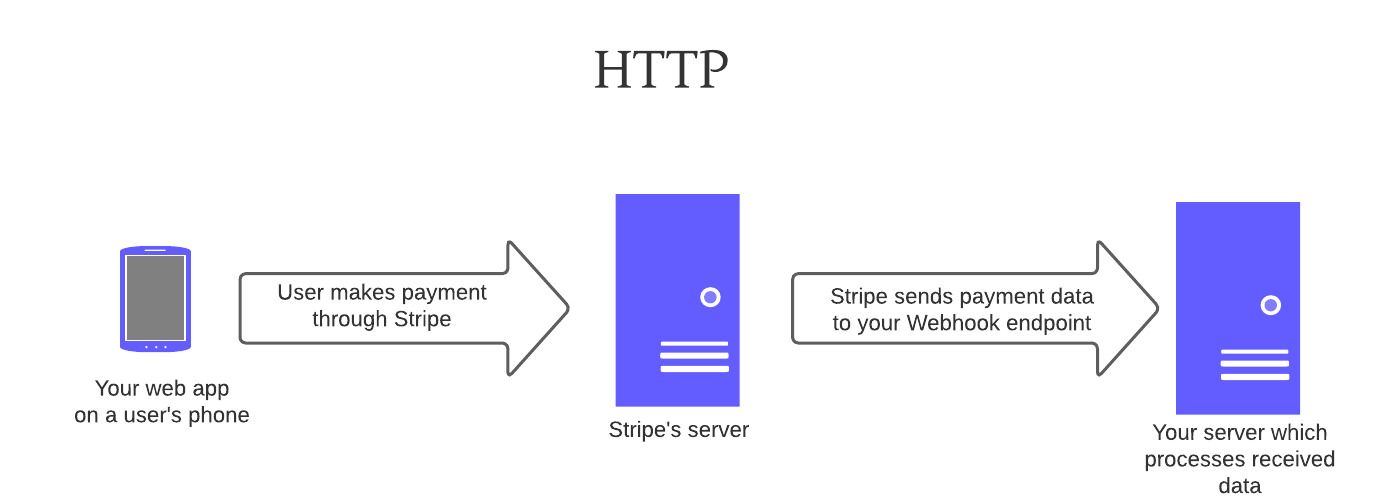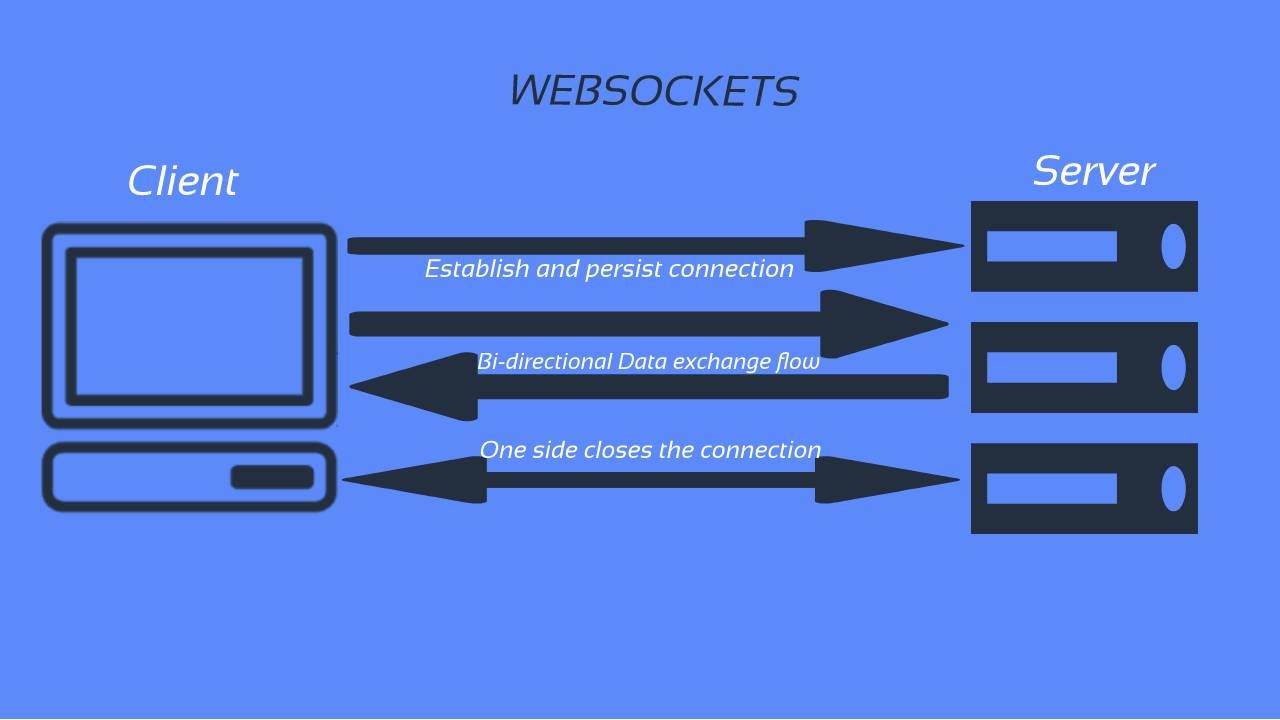Webhooks and WebSockets are two web development technologies that people often confuse. Many modern web applications make use of both Webhooks and WebSockets. Although quite different, Webhooks and WebSockets both address communication in web applications.
So what are Webhooks and WebSockets? What are the things that make them different?
What Are Webhooks, and How Do They Work?
You can think of a Webhook as an “event-triggered HTTP request”. What does this mean? A Webhook is an HTTP callback action usually triggered by an event in a server. That’s not all, it usually sends data via a pre-configured URL to another server. This births the idea of Webhooks being a “server-to-server” means of communication.
To better understand the working mechanism of Webhooks, consider a web application that uses Stripe’s API to receive payments. Whenever a customer makes a payment, Stripe receives the money, but your app has no idea. This is where Webhooks come in. Consider the image below:
Stripe requires you to provide a Webhook endpoint URL to send the customer’s payment data to your server when a new payment event is triggered. Your server then receives the data, performs operations on it, and saves persistent data to the database.
What Are WebSockets, and How Do They Work?
WebSocket is a protocol you’ll typically use with JavaScript. It establishes a two-way, persistent, bidirectional communication channel. It does so over a single connection made between two TCP ports from a client (browser) to a server. The most popular application of WebSockets is in chat applications like WhatsApp.
While Webhooks are HTTP based (i.e make use of the HTTP protocol), WebSocket is an entire protocol on its own based on TCP just like HTTP. WebSockets can be very beneficial when working on low-latency server-client data streaming applications.
You can achieve low latency with a WebSocket connection because it stays open between transactions, unlike default HTTP. This allows data to flow seamlessly between both parties.
Before WebSockets, developers used various methods of getting real-time data over HTTP. Although they’ve been around for a while, they suffer from limitations.
For example, long polling requires the client to always send a new request to the server at a specified time interval. This means that when there's new data in the server, it returns it. But if there isn't, the request is effectively wasted.
Unlike Webhooks, either end of a WebSocket connection can send data to the other. This is one reason why WebSockets offer a huge speed advantage, especially when data is being sent from the server to the client. Apps using WebSockets should benefit from low latency when fetching data from the server.
You can use WebSockets over TLS, too, just like HTTP. This secures the data you transmit, helping to mitigate man-in-the-middle attacks. Even a persistent connection will remain secure with this approach. You won’t have to worry about attackers stealing data or communication corrupting it.
When Should You Use Webhooks?
Webhooks and WebSockets aim to implement better means of real-time communication over the web. However, they do so in totally different ways. It can often be a challenge to decide which of these two technologies you should use in your application. You should pay careful attention to their strengths and weaknesses to see which best meets your requirements.
So when should you choose Webhooks over WebSockets?
- When consuming an API you don’t own. Consider the Stripe example from the earlier Webhook illustration. Stripe is a payment service provider and your application can only build on top of their API. You have no control over Stripe, so you can’t create a WebSocket server at their end. In cases like this, you should use Webhooks.
- If your app is a server that needs to communicate with another server, it’s best to use Webhooks. This is the ideal “server-to-server” communication system.
- Webhooks aren't bidirectional or persistent. You should only use Webhooks when your application isn't expecting response data over the same channel.
- It is also noteworthy that Webhooks are the ideal way to go for server operations that run as serverless functions. Examples include AWS Lambda and Google cloud functions.
You can experiment with Webhooks on webhook.site. This site lets you see what the data that a Webhook sends to your application will look like. It’s very useful to understand the nature of a Webhook’s communication before you try to implement an endpoint in your application.
When Should You Use WebSockets?
Real-time applications, notification systems, and live data sharing systems are some common applications of WebSockets. Keeping in mind that with WebSockets, the connection channel has to always be open, this protocol should only be used when the cost is worth it.
- You should use WebSockets when your application continuously exchanges data between the client and server. For example, in a live location-sharing application, a user’s location is continuously updated on both the server and client as they move. WebSockets make this possible.
- In multimedia communication applications like WhatsApp, WebSocket is the ideal communication protocol. It allows for very fast bidirectional data exchange which is central to these kinds of apps.
- You should also use WebSockets in applications that implement real-time feeds such as Livescore. This website shares live football match updates as they happen in real-time. But it does so without needing to make new requests or requiring you to refresh your browser.
- Other cases where you should use WebSockets include live video/audio streaming apps, live notification systems, and real-time multiplayer games. They’re also useful in collaborative editing applications like Google Docs, Notion, etc.
Webhooks and WebSockets Are Different
It’s clear that, although Webhooks and WebSockets solve similar problems, they are not the same and each has its own particular use cases. Webhooks are uni-directional, event-triggered callbacks based on the HTTP protocol. The WebSocket technology is a standalone protocol, which allows the bidirectional exchange of data without requests.
It is important to always identify your need when building an application to avoid wasting resources. In some cases, you should prefer Webhooks because WebSockets can sometimes be cost-prohibitive. Make sure you only use them when necessary.



